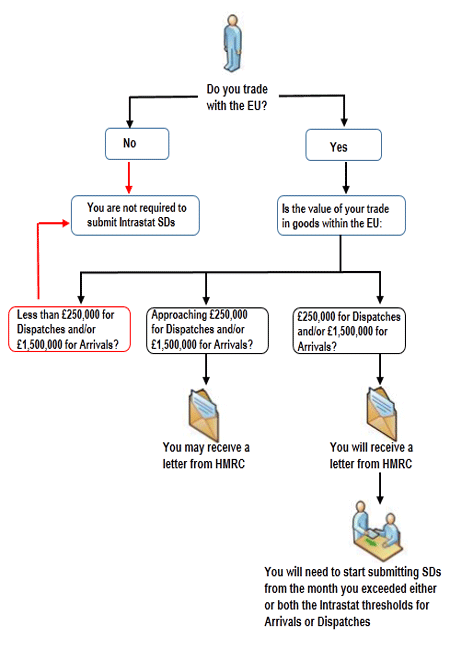I am often asked if there is a VAT beginner’s guide, I find HMRC guidance generally unhelpful for someone without a tax background, so, here is all the basic information you may need in one place.
What is VAT?
Value Added Tax (VAT) is a tax charged on most business transactions made in the UK. It is charged on goods and services and is an ad valorem tax, which means it is proportionate to the value of the supply made.
All goods and services that are VAT rated (at any rate including zero) are called “taxable supplies”. VAT must be charged on taxable supplies from the date a business first needs to be registered. The value of these supplies is called the “taxable turnover”.
Exempt items
VAT does not apply to certain services because the law says these are exempt from VAT. These include some; financial services, property transactions, insurance education and healthcare. Supplies that are exempt from VAT do not form part of the taxable turnover.
The VAT rates
There are currently three rates of VAT in the UK:
- 20% (standard rate) – Most items are standard rate unless they are specifically included in the lower rate categories.
- 5% (reduced rate) – this applies to applies to certain items such as domestic fuel and power, installation of energy-saving materials, sanitary hygiene products and children’s car seats.
- 0% (zero rate) – applies to specified items such as food, books and newspapers, children’s clothing, new houses and public transport.
VAT registration
A business is required to register for, and charge VAT, if:
- the taxable turnover reaches or is likely to reach a set limit, known as the VAT registration threshold
- a VAT registered business has been acquired as a going concern (TOGC)
- potentially; goods or services have been purchased VAT free from non-UK countries (a self-supply)
Registration limit
The current VAT registration threshold is £85,000. If at the end of any month the value of taxable supplies made in the past twelve months is more than this figure a business MUST VAT register. A business can opt to register for VAT if its taxable turnover is less than this. Please note that taxable turnover is the amount of income received by a business and not just profit. If a business does not register at the correct time it will be fined.
Additionally, if, at any time there are reasonable grounds to expect that the value of the taxable supplies will be more than the threshold in the next thirty days alone a business must register immediately.
What are the exceptions?
VAT is not chargeable on:
- taxable supplies made by a business which is not, and is not required to be, registered for VAT
- zero rated supplies
- supplies deemed to be made outside the UK
- exempt supplies
What if a business only makes exempt or zero-rated supplies?
Exempt
If a business only makes exempt supplies, it cannot be registered for VAT. If a business is registered for VAT and makes some exempt supplies, it may not be able to reclaim all of its input tax.
Zero rated
If a business only supplies goods or services which are zero-rated, it does not have to register for VAT, but, it may do so if it chooses.
What is input tax and output tax?
Input tax is the VAT a business pays to its suppliers for goods and services. It is VAT on goods or services coming into a business. In most cases, input tax is the VAT that registered businesses can reclaim (offset against output tax).
Output tax is the term used to describe the VAT charged on a business’ sales of goods or services. Output tax is the VAT a business collects from its customers on each sale it makes.
A full guide to VAT jargon here
Is there anything that will make VAT simpler for a small business?
There are a number of simplified arrangements to make VAT accounting easier for small businesses. These are:
- Cash Accounting Scheme
- Annual Accounting Scheme
- Flat Rate Scheme
- Margin schemes for second-hand goods
- Global Accounting
- VAT schemes for retailers
- Tour Operators’ Margin Scheme
- Bad Debt Relief
Details may be found here and here and here.
VAT calculation
- A business adds VAT to the value of sales it makes to other businesses or customers
- The VAT amount is reached by multiplying the sale amount by the VAT rate percentage, then adding that to the value of the sale.
- The total of the VAT on sales for a VAT period is output tax
- For a VAT period, a business will total all VAT it has been charged by suppliers (eg stock, repairs, rent, and general business expenses etc) – this is input tax.
- On the VAT return for the period, the amount payable or reclaimable to HMRC is the output tax less input tax.
Records
A business must keep complete, up-to-date records that enable it to calculate the correct amount of VAT to declare on its returns. VAT records must be kept for at least six years, because a business will need to show them to HMRC when asked.
It is acceptable for ordinary business records to be the basis for VAT accounts. A business will need records of sales and purchases (and any adjustments such as credit notes) including details of how much VAT the business charged or paid. If trading internationally, records of imports and exports/dispatches and acquisitions with all overseas territories, including the EU must be recorded. VAT records must show details of any supplies a business has given away or taken for personal use.
VAT records must also include all invoices you have received and issued. Invoice requirements here
Records will also need to include a VAT account, showing how total input tax and output tax has been calculated to include in your VAT returns.
It is vital to ensure that the VAT records are accurate. Failure to do so can lead to significant tax penalties
MTD
For certain business, the new MTD rules apply and certain software must be used. Details here
Time of supply (tax point)
It is important to establish the time VAT is due. Full details here
VAT returns
A VAT registered business must submit returns on a regular basis (usually quarterly or monthly). A VAT return summarises a business’ sales and purchases and the VAT relating to them. All the information a business requires must be in its VAT records, specifically a VAT account.
Return requirements include:
- sales total (excluding VAT)
- output tax – this also includes VAT due on any other taxable transactions, eg; barters, non-monetary consideration, goods taken for personal use
- value of purchases (excluding VAT)
- input tax claimable
- total of VAT payable/claimable
- summary of trade with other EU Member States
Online VAT returns are due one month and seven days after the end of the VAT period. Payment of any VAT owed is due at the same time, although HMRC will collect direct debit payments three days later.


